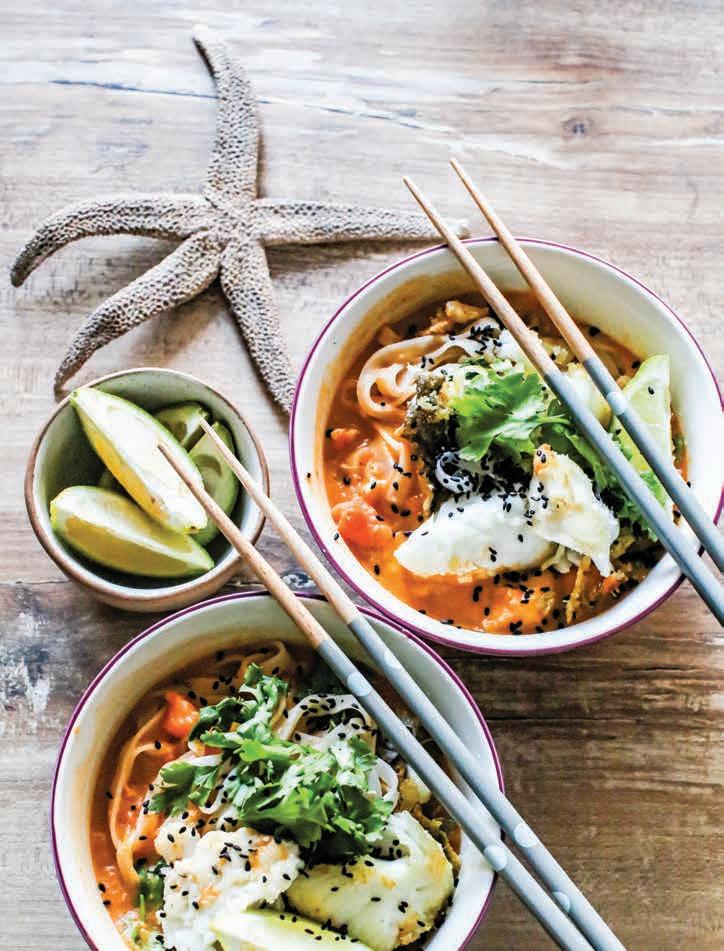


















November is a bit of an in-between month. It’s late autumn but still warm, officially it’s nearly winter but the beach still beckons, daytime is warm and sunny but evening darkness falls early. Those contrasts are reflected in the food and architecture pages this month. We feature a newly-built villa that spreads out on ground level surrounded by open outdoor space, and an old house in a walled city. In our food pages, Claire Borg’s fish dishes carry summer flavours right into late autumn, Michael Diacono sidesteps the irkotta/ricotta debate with a collection of savoury recipes using one of Maltese-cuisine’s favourite ingredients. On cooler days, warm up with a cup of white or dark hot chocolate, or bake some goodies with fruit and nuts. If you’re interested in wine and crave open space, Andrew Azzopardi has some ideas for travelling in the world of wine. If you’re drawn to nature – incidentally, the title of the exhibition featured on our last page – flick through to the feature on the Aleppo pine, and consider joining one of the voluntary tree-planting sessions organised by the community initiative, “Grow 10 trees”. By the time you read this, we’ll have started work on the Christmas issue of Taste&Flair, which will be out at the beginning of December.
If you missed any issue of Taste&Flair and want a copy, we may be able to help so please do get in touch with us by email, Messenger, or on Instagram.
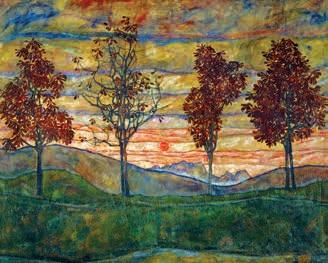
Publisher
The Daphne Caruana Galizia Foundation 56 Melita Street, Valletta VLT1122, Malta
Editorial Board
Paul Caruana Galizia Andrew Caruana Galizia Matthew Caruana Galizia
Executive Editor Corinne Vella
Editorial Assistants Megan Mallia • Amy Mallia
Art Director Ramon Micallef +356 9949 1418 ram@box-design.net
Advertising Manager & Editorial Contributor Sean Ellul +356 7921 0705 sellul@independent.com.mt

Advertising Assistant Christine Mifsud +356 21 345 888 ext 138 cmifsud@independent.com.mt
Production Manager André Camilleri
Production Assistant Conrad Bondin
24.
Prepress
Printing Print It
All communication about Taste&Flair magazine should be directed to Corinne Vella at corinne.vella@gmail.com
No part of any issue of Taste&Flair may be reproduced without the written prior agreement of the publisher.
Distributed with The Malta Independent on Sunday*. The Malta Independent on Sunday is published by Standard Publications Ltd - Tel +356 21 345 888
*The surcharge on The Malta Independent on Sunday, or any charge for this magazine is retained by Standard Publications Ltd.
Follow Taste&Flair on

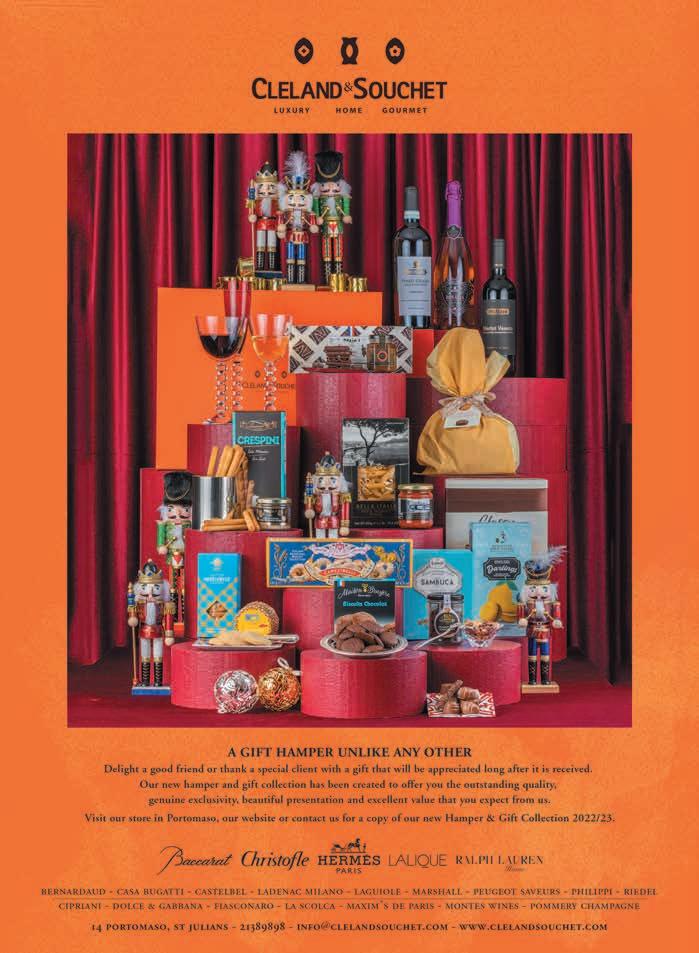




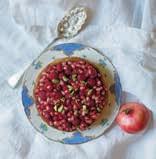
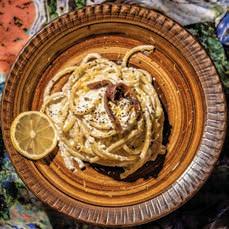

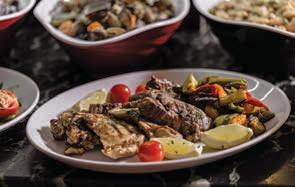
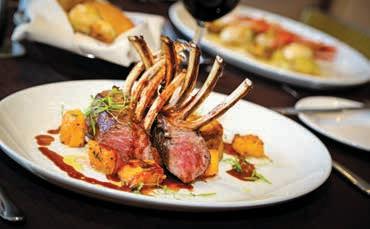
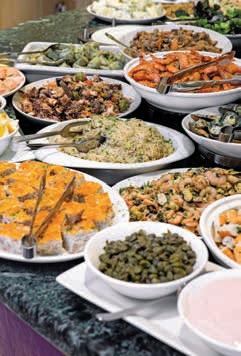
The tradition of the Sunday feast remains an important family ritual. After a busy week of work, school, errands, and chores, this is a sacred time for everyone to sit down together, unwind, and enjoy each other’s company over great food and drink… ideally without any timeconsuming cooking and washing up before and after your mouthwatering, multi-course meal.

Now,your Sunday family feast is made more enjoyable than ever before thanks to Fra Martino’s newly launched Sunday buffet lunches. The hugely popular family-friendly restaurant, located in Corinthia St George’s Bay, serves up everything you could ever want for an unforgettable Sunday together.
Each week, Executive Chef Kevin Arpa and his team prepare an array of delicious dishes that draw from an eclectic mix of international cuisines. The buffet offers a mouth-watering selection of food to suit all tastes and ages and a level of cooking that’s a definite cut above your average Sunday fare.
Begin your culinary journey with a complimentary glass of chilled Prosecco, the perfect overture to an afternoon of great dining and stellar service. Experience the true pleasure of variety on your plate with helpings from six fabulous food stations serving everything from slow-cooked carvery
meats and divine pasta dishes to Continental soups, Oriental favourites, Mediterranean antipasti, and more.
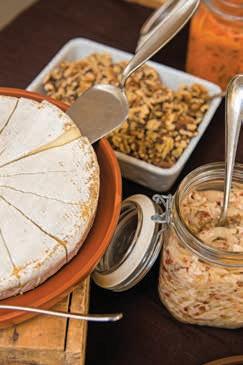
After you’ve all eaten to your hearts’ content, there’s plenty more to look forward to on the dessert table. Sample a tantalising selection of sweets including flans, tarts, gateaux, pies, cakes and mousses, crêpes, ice cream, and many other enticing treats.

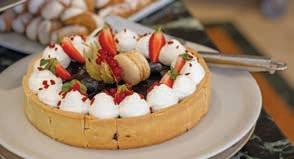
All the while throughout your meal, you’ll be entertained no end by some of Malta’s finest local musicians playing classics, old and new. It’s a guaranteed great time for the entire family.
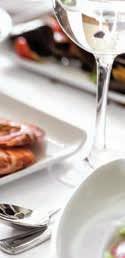
Sunday buffet lunches at Fra Martino take place every Sunday between 1.00 pm and 3.00 pm. Prices start from just €39.50 per person and €19.75 for children between the ages of 6 and 11, while children up to the age of 5 eat free of charge. Diners also enjoy free parking at the Corinthia St George’s Bay for an entirely stress-free afternoon. n

The restaurant is extremely busy during Sunday lunchtimes, so call ahead to book your table. Guarantee your spot at Fra Martino’s next Sunday buffet lunch by making a reservation on +356 23700000 or framartino.stgeorges@corinthia.com
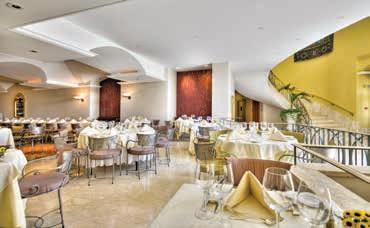
The Cleland & Souchet Hamper Collection 2022. Each hamper is beautifully presented in our iconic gift boxes and bags with an exclusive selection of wines, fine foods, chocolates and confectionery, to offer the taste, quality and excellent value expected from a C&S product. Visit our shop or website or contact us for our new hamper brochure. Cleland & Souchet, 14 Portomaso, St Julianswww.clelandsouchet.com Tel: 2138 9898, Email: info@clelandsouchet.com

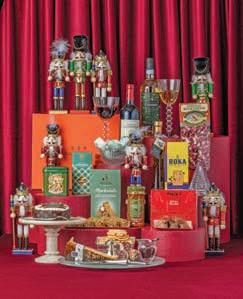
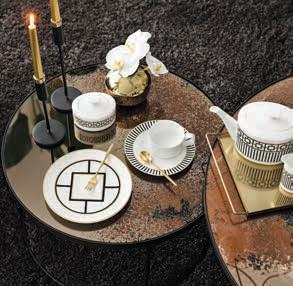

MetroChic tableware & gifts collection by Villeroy & Boch at Joinwell. Whether a purist white or a geometric pattern in expressive black and gold, all pieces in the high-quality MetroChic tableware and gifts collection can be combined in many different ways. The elegant and particularly resistant Premium Bone Porcelain transforms every table into a modern style statement of timeless elegance. The Metrochic collection adds the finishing touch to your beautifully set table and will delight you for a long time with its brilliant pattern thanks to “Inglaze Gold” technology. Treat yourself to urban design or delight loved ones with this elegant gift idea. Available exclusively at Joinwell.
Lava collection by Villeroy & Boch at Joinwell. Authentic stoneware with an organic design: the Lava collection casually reflects the beauty of nature and produces unique works of art. The special glaze creates a variety of different shades, making each piece unique. Give free rein to your individuality and creativity. With or without flowers, the vase always looks stunning. Spice up your interior with a trendy, stylish handmade look or make it a memorable gift to someone dear to you. Available exclusively at Joinwell.
Bodrato, fine artisanal chocolate since 1943, based in Novi Ligure, the Capital of Chocolate. GREAT CORPORATE GIFTS. Bodrato offers unique and exclusive gift ideas, with a wide range of products from the most traditional to the most prestigious, with limited edition gift boxes for Christmas. The careful selection of raw materials and the uniqueness of the packaging and attention to little details, makes the presentation of a Bodrato gift both tempting and exciting. Various companies, both large and small, and organizations rely on us to create tailored corporate gifts for loyal customers. Differentiate yourself by choosing a Bodrato gift of fine chocolate. Bodrato is available at The Point and Santa Lucia Gourmet, Wines and Gifts, Attard. Tel: +356 2141 7894, email: info@santaluciacafe.com, BODRATO bodratocioccolato.it

ESTEBAN PARIS. This lovely remote-controlled perfume mist diffuser allows you to vary the light intensities and remotely control the diffusion time of your scented atmosphere. Just fill with water, add a few drops of essential oil, and enjoy. This comes in three different finishes and prices start at €75. Shop online: WWW.GREYANDADLER.COM or visit Grey & Adler at their new boutique in Labour Avenue, Naxxar.
Our best-selling Lion Pot is back in stock. This guardian lion pot is a majestic piece of art for indoor use, keeping your home safe and sound. With a matte white finish (and also available in black for more drama), made of terracotta and the detail of an ear piercing made of brass, this lion exudes confidence and drama. It comes in two sizes, and can be purchased online on WWW.GREYANDADLER.COM or visit Grey & Adler at their new boutique in Labour Avenue, Naxxar.

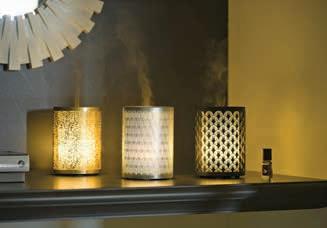



Skultuna. Kin is a tea light candle holder with five different models designed by the internationally successful design studio Claesson Koivisto Rune. This is the original series made of polished brass on both the inside and the outside. Shop online: WWW.GREYANDADLER.COM or visit Grey & Adler at their new boutique in Labour Avenue, Naxxar.
Côte Noire. This beautiful life-like Twelve Rose arrangement has been set in gel infused with a fine fragrance. Each flower is skillfully hand crafted & uses a special, natural coating to give every petal a natural touch & appearance. A perfume, which you can spray directly onto the roses to refresh & enhance the scent, is included. Beautifully packaged in a hand-made Round Pink Box. Prices start at €55. Shop online: WWW.GREYANDADLER.COM or visit Grey & Adler at their new boutique in Labour Avenue, Naxxar.
Choosing and wrapping presents is fun when you’re not rushed. Start early and spread some seasonal joy with our selection of gifts.
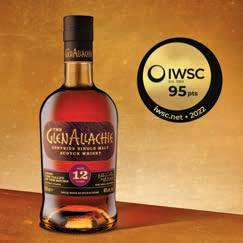


p Apart from a myriad of the most exclusive foods and confectionery, Dical House, of Triq San Anton Abbati Mosta, also boasts a very well stocked wine and spirits cellar with various quality labels and rare ones brought together in one precious space. One can decide to combine gifts according to taste and budgets and also have these exclusive gifts delivered in Malta or to other EU countries. Corporate clients can request a personalised meeting via email on foods@dicalgroup.com. Visit www.dicalhouse.com to gain insight to a few of the festive items available, but for the real deal a visit to the flagship store is a must. Tel. 2142 4600/1.
The outlet is open all day, every day during the festive season including public holidays (half-days during special days such as Christmas Eve or Christmas day) and can also be easily found by means of google maps. Suggested hampers can be seen on the website www.dicalhouse.com but each one can be customised according to your taste and budget. Dical House hampers can also be delivered anywhere in Malta. Just be sure to think ahead to avoid disappointment as certain items will be gone well before Christmas. Contact details: tel. 2142 4600/1, foods@dicalgroup.com
q THUN Complete Nativity Set. Classic ceramic Nativity Figurines set including the Holy Family and stable. The perfect set to make your crib special. Discover all the ceramic creations to celebrate the sweetest of traditions. Perfect gift ideas also to collect. Available at THUN Valletta at St John’s Square and also at Santa Lucia Gourmet, Wine and Gifts in Attard. Tel: +356 2124 1641, Facebook THUNMALTA, email: thunmalta@gmail.com


A COMPLETE RANGE OF MULTI-AWARDED PRODUCTS THAT RESPECTS THE PHYSIOLOGYOF INFANT SKIN. WITH ONLY THE FINEST PHARMACEUTICAL-GRADE INGREDIENTS TO ENSURE SAFETY AND QUALITY. DERMATOLOGICALLY AND OPHTALMOLOGICALLY TESTED. Available from all leading Pharmacies.

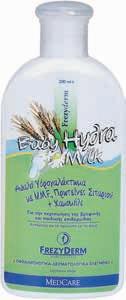


Exclusively Distributed by Am Mangion Ltd, Tel: 2397 6000, www.ammangion.com.mt
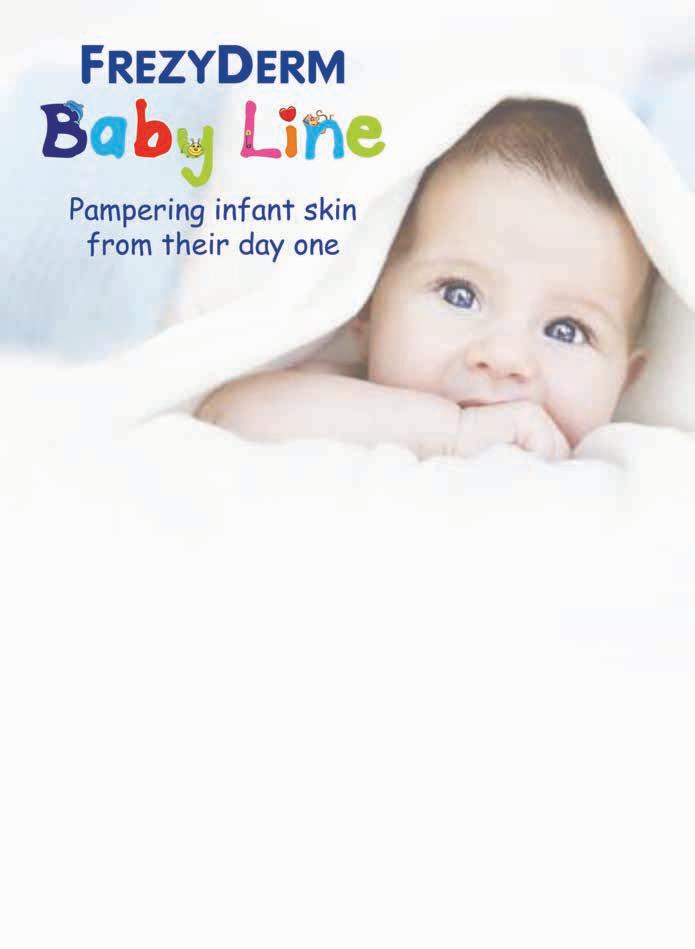



These are a fun and different version of the traditional sweet cannoli, and are great to serve with prosecco just before lunch. You will need metal cannoli tubes to make the pastry shells.
Makes 16
Preparation and cooking 165mins (including pastry resting time)
Recommended wine “The zingy tingling of the bubbles of a Prosecco make for a great pairing.”
FOR THE PASTRY
250g plain flour, sifted • ½ teaspoon salt
¼ teaspoon pepper • 30g lard
50g grated dried local sheep’s cheese
1 egg • 60ml dry white wine
FOR THE FILLING
100g Parma ham, finely chopped 500g ricotta cheese
1 tablespoon finely chopped parsley freshly cracked pepper • salt
TO GARNISH
A few capers or chopped pistachio nuts
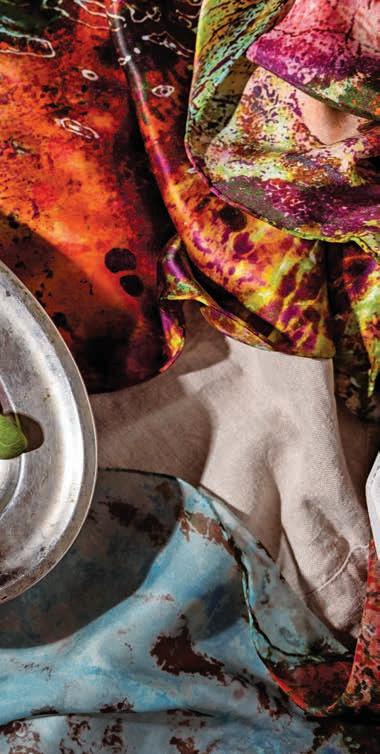
1. Prepare the pastry by rubbing the lard into the flour, salt and pepper till it resembles breadcrumbs. Work in the egg and wine and knead the mixture lightly to form a smooth dough. Wrap the dough in cling film and let it rest in the fridge for at least 2 hours.
2. Prepare the filling by beating the ingredients together until they are smooth and silky.
3. Roll out the pastry as thinly as you can on a floured surface. Alternatively use a pasta maker to do this.
4. Cut out rounds that are slightly smaller than your cannoli moulds. Rub the tubes very lightly with oil then wrap a piece of pastry around each mould, pressing down on the overlap to secure it.
5. Deep fry the pastry in clean vegetable oil at 180°C till puffed and golden. This should take a minute or two. Use a slotted spoon to remove the cooked pastry tubes and let them drain on kitchen paper without removing the moulds.
6. When cool enough, gently slide the pastry off the tubes. Repeat the process till you use up all the pastry.
7. Just before serving, fill up the pastry tubes with the ricotta mixture and garnish the ends with capers or chopped pistachio nuts.
There’s no need to turn the oven on to make this pizza. It’s great to make with children. You can play around with the toppings, although I always think that less is more
Serves 2
Preparation and cooking 120mins
Recommended wine (adults only!) “I would opt for an Italian style rose to keep the dish light and fun, but a Chianti Classico DOCG should also work perfectly.” YOU WILL NEED
200g flour ½ teaspoon instant yeast ¼ teaspoon sugar ½ teaspoon salt 125ml warm water 5-6 tablespoons tomato sauce a few slices of grilled or fried aubergines
2 heaped tablespoons ricotta cheese
1 tablespoon chopped pistachio nuts extra-virgin olive oil
Parmesan shavings fresh basil leaves
1. Mix the flour, yeast, sugar, and salt together in a large bowl. Bind the mixture with the warm water, then knead it lightly for about 5 minutes. Cover the bowl with a damp cloth and set it aside for about an hour for the dough to rise.
2. Use your hands to open out the dough on a floured surface into a circle of approximately 22cm.
3. Heat a large non-stick frying pan then transfer the pastry to the pan. Cook it for about 4-5 minutes on medium heat before turning it over and cooking for a further 5 minutes, taking care to ensure the dough doesn’t burn.
4. When the dough’s done, top it with the tomato sauce, aubergines, and a drizzle of extra-virgin olive oil. Place the topped dough under a hot grill for a couple of minutes, then add the pistachio nuts, basil and Parmesan shavings. Serve at once.



The real deal, as the name implies, is a recooked fresh and soft cheese made from leftover whey. This is left to sit for a while at a set temperature, during which fermentation begins and the whey turns slightly acidic. Then it is reheated to nearly boiling point and strained. Any remaining proteins would have coagulated into curds. These are then left to drain. The recipe here is technically not a true ricotta as it does not involve cooking, but it is fun to make at home and can be used in all of the other recipes featured here.
2l full fat fresh milk (do not use skimmed or UHT milk) 20 ml distilled vinegar 1 pinch salt
1. Heat the milk and salt to 93°C. Add the vinegar and mix it in, then remove the pan from the heat and let the mixture stand for 15 minutes.
2. Line a colander with clean muslin or cheesecloth and stand it over a bowl. Pour in the mixture and let it drain for 20 minutes.

3. Place the drained mixture into small cheese baskets (qwieleb) and store them in the fridge. The “ricotta” will last for 2 days if kept refridgerated.
4. Serve the “ricotta” spread on toasted Maltese bread with a sprinkle of Gozo sea salt, freshly cracked pepper, and a drizzle of local extra virgin olive oil.
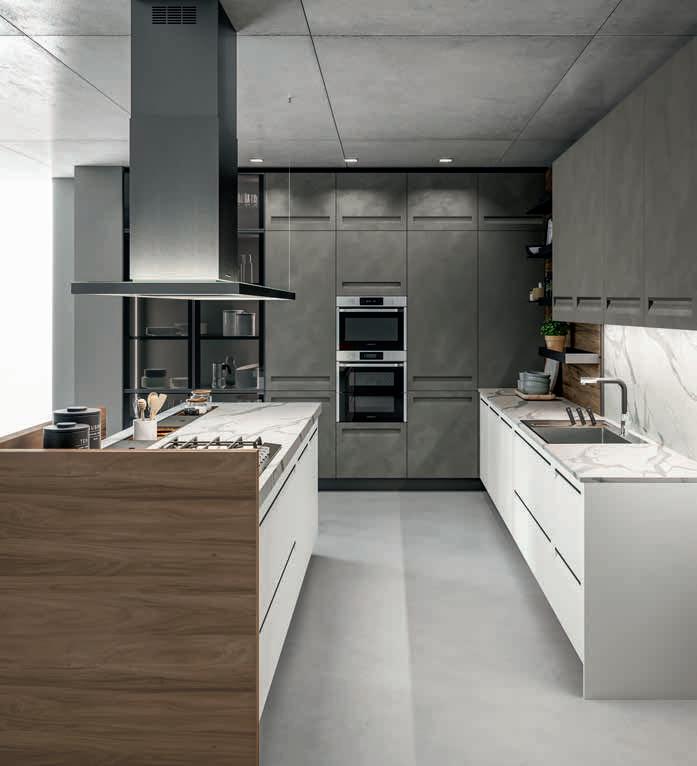




This quick and light lunch or dinner is made all the better served with fresh Maltese bread.
Serves 2 Preparation and cooking 40mins Recommended wine “If you like the buttery notes, a Californian Chardonnay is a great choice. Alternatively, go for an Etna Bianco or a lighter style red such as a good quality Italian Pinot Nero.”
6 king oyster mushrooms, sliced
2 plum tomatoes, (żenguli), quartered
2 cloves garlic, peeled and chopped
2 x 250g individual ricotta portions salt and pepper a few basil leaves 80g grated Pecorino extra-virgin olive oil
1. Preheat the oven to 180°C
2. Place the sliced mushrooms in a baking dish and spread the tomatoes around it. Add the chopped garlic.
3. Place the 2 ricotta portions in the middle of the dish and season them with salt and pepper. Dot them with fresh basil leaves, a sprinkle of pecorino and a drizzle of extra-virgin olive oil.
4. Bake the dish for 5-8 minutes and serve immediately with lots of fresh, crusty bread.
The rice for these “arancini” is delicately scented with saffron while the ricotta filling is scented with lemon zest and herbs.
Makes 8
Preparation and cooking 120mins (including resting time)
Recommended wine “Traditional method sparkling wine such as Champagne or Cava work perfectly, otherwise choose a fuller bodied white such as a European, oaked Chardonnay.”
YOU WILL NEED
400g Carnaroli, Arborio or Vialone Nano rice

1.2l boiling water • approximately 3-4g saffron salt • 100g Grana Padano • grated 80g butter
400g ricotta • zest of 1 lemon 80g grated pecorino cheese
1 tablespoon finely chopped parsley black pepper • salt • flour, to coat 3 eggs • panko breadcrumbs • oil to deep fry
1. Add the rice to a deep pot and gradually add the boiling water and salt, stirring often. Stir in the saffron half way through cooking.
2. When all the water has been absorbed, remove the pan from the heat and beat in the cheese and butter. Turn out the mixture into a large dish and set it aside to cool.
3. Beat the ricotta with the lemon zest, pecorino cheese, parsley and pepper. Taste the mixture to see if it needs salt.
4. Lightly beat the eggs in a deep bowl and prepare a bowl with flour and panko breadcrumbs.
5. Using damp hands, take a ball of rice and shape it in your palm. Fill it with ricotta and then press the rice “shell” together lightly so that the ricotta is sealed inside. Run the rice ball through the flour, then the beaten eggs, and finally through the breadcrumbs, ensuring the rice is properly coated.
6. Fry the rice balls in hot vegetable oil at 170°C for about 8 minutes till golden brown and crisp. Use a slotted spoon to remove the cooked rice balls from the hot oil. Let them drain on kitchen paper before serving.
“The Sirocco collection is a particularly special one because it takes me back home; where an archaeologist handed me a Maltese pottery fragment from 7,000 years ago. He showed me its wonderful textures under a microscope, formally referred to as fabrics. These fabrics are important to him, as they tell stories of the past, its people and their craft, helping him understand who they were and how they lived. I am inspired to bring these textures into the present and use the microscopic imagery as a starting point to create the designs you see before you today”


When I was young, I remember my mother used to prepare a pasta dish with ricotta on busy days as it was fast and simple to make. This is my take on that recipe.
Serves 4
Preparation and cooking 20mins
Recommended wine “My first choice would be a Californian Sauvignon Blanc with a slight touch of oak, but alternatively a premium Orvieto would work perfectly.”
400g bucatini 400g soft ricotta 100ml fresh single cream 80g grated Parmesan juice of ½ lemon freshly milled pepper • salt 8 anchovy fillets lemon zest
1. Bring a large pot of salted water to the boil. Add the pasta, stir it, and let it cook for required time until it is al dente
2. Meanwhile, place the ricotta in a bowl and beat it with the cream until it is smooth. Add
the cheese and lemon juice, and season it with pepper. Taste it and adjust the seasoning, adding more salt, if necessary.
3. When the pasta is al dente work quickly to drain it, reserving some of the cooking water and then return the pasta to the pot.
4. Place the pan on a medium heat, add the ricotta and mix it in. Use some of the pasta water to loosen the mixture slightly, then serve at once topped with anchovy fillets and a grating of lemon zest.

 Andrew Azzopardi on the ins and outs of eno-tourism
Andrew Azzopardi on the ins and outs of eno-tourism
remember the time I left it to the last minute to buy my girlfriend (now my wife) a birthday present. I knew I was in big trouble, unless I thought of something fast. As you can guess, I panicked. I bought two tickets to Florence for the trip of a lifetime. Her knowledge of Florence was way better than mine, since she had studied there for a couple of months, but my plan was to take her on a gastronomic experience in one of Italy’s finest culinary regions –a food inspired trip, you may say.
Stemming from a family of foodies, it’s not surprising that I am a self-
described gastronome interested in anything that is food and wine related. Planning a holiday usually starts with a whole load of research on restaurants and eateries of the area, where I love to learn about the history, culture and traditions of the area from a gastronomic point of view. Including wineries and vineyards in our trips was an obvious step and they have become the primary focus of our travels.
Wine tourism was developed in the 1970s by Mondavi Winery in California. At a time when wineries were only open to industry professionals, this state-
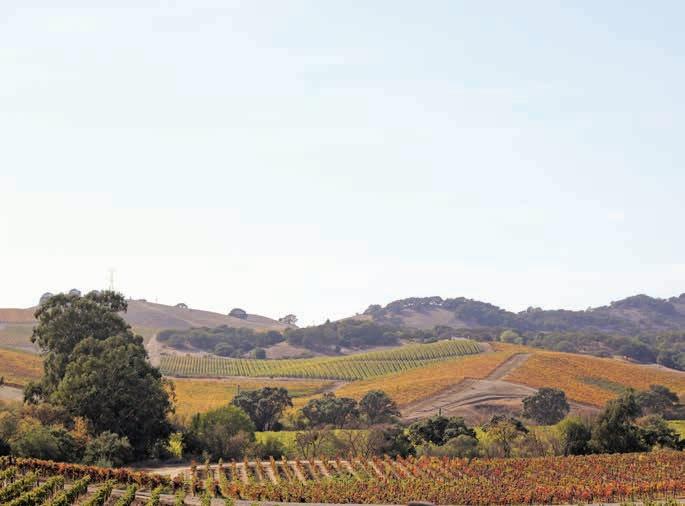


IclearlyMondavi Winery, Napa, California Mondavi Winery, Napa, California Driving the scenic route in Napa, California
of-art winery in Napa Valley opened its doors to the public showcasing the dramatic architecture, tasting rooms and beautiful, lush grounds that could handle bus-loads of tourists at a time. Other wineries recognised the demand and exposure they got and soon followed suit. By the 1990s, chauffeured limousines and professionally organised private tours took tourists to many wineries which took time out of their day to explain their operation, show off their facilities and even allow the public a taste of their wine, often at a small charge.
Wineries open their doors for people to immerse themselves in the regional culture and traditions and learn more about the wine, topography, climate (and microclimates) as well as the biodiversity of the place. Contrary to common perception, wine tourism is not only for the sommelier, expert or wine guru, but is open to anyone equipped with curiosity and interest. Most wineries will not snub you as a newbie, however there are a few guidelines that will help you make the best out of your wine-inspired trip.
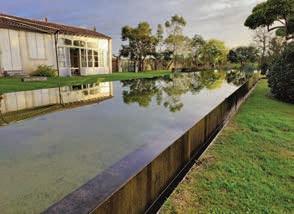

It sounds obvious and really it is, but you’d be surprised how many people think they can just rock up at some remote vineyard requesting a tour and tasting of their wines. While some vineyards accept walk-ins, most are only open by appointment. You are also guaranteed their full attention when you book well in advance. Unfortunately, there are some super-premium wineries that are still only open to the trade, but there are usually quite a few alternative options.
Understand the season
There are certain periods during the winemaking process that are better suited to visiting the vineyards. While there are some vineyards that do allow visitors to join in the fun during harvest, most keep it a closed affair. Some wineries allow you to get your hands dirty, and really get the full experience of picking and treading grapes. That can be extremely good fun; however, most wineries are closed to the public during this time. If you are visiting the wineries during their harvest, make sure to check whether visitors are allowed.
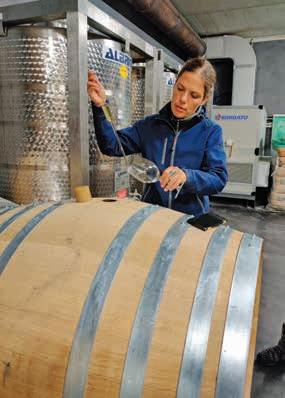
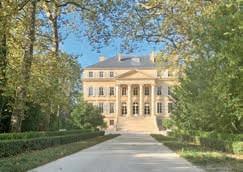
Harvest season is not the only period visitors may have restricted access. During the last weeks of April and May, many Bordeaux estates will be busy tasting the primeurs when thousands of wine professionals flock to the place to taste the wines of the previous vintage. This annual migration not only pushes up accommodation costs, it also fills up the wineries’ times with professional tastings, allowing them limited time to give you any attention at all.
It may be tempting to fit in as many wineries as possible during the day, but give yourself time to enjoy each and every experience. Usually, 3 or 4 wineries in one day hits the sweet spot. Make sure to have a good breakfast and allow time for lunch to soak up all the alcohol. Get yourself a driver or take a guided tour to avoid any problems with drink driving, allowing you to enjoy yourself without repercussions.
not

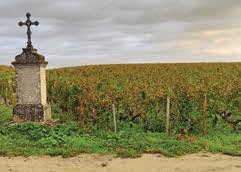
Wearing the right clothes for any trip is important to enjoy it to the full. It’s never fun feeling too cold or hot on holiday. Bear in mind that most wineries have rather cool cellars so a couple of layers or a light pullover during the warmer months and a waterproof jacket in the wetter season will improve the experience.
Don’t forget that, if you’re being shown around the vineyard, there’s a good chance of encountering mud, soil, or gravel. Comfortable walking-shoes are a good choice. Many wineries have gravel terraces and high heels are hardly a good idea, even if you don’t go round the entire vineyard. An integral part of enjoying wine is the smell. We want to appreciate the amazing smells of the cellars, and obviously the wine itself, so avoid wearing any strong perfumes or cologne.
Usually, I also pack a small umbrella in case of rain, and a bottle of water to keep well hydrated throughout the day. Lastly, don’t chug the wine and don’t get drunk - It’s seen as offensive and disruptive.
Especially if you are a newbie, I suggest choosing wineries that are diametrically opposing in size and function. Many a time, larger wineries such as Mondavi are well equipped for wine-tours where you get a sense of history and how such large producers operate, but the smaller wineries are often more intimate where you can get special attention and possibly an extra glass of wine.
If you’re interested in organic or biodynamic practices, it’s definitely worth your time to add these styles of winery to your visits. It is a fulfilling experience to understand and appreciate the differences in approach to their winemaking.
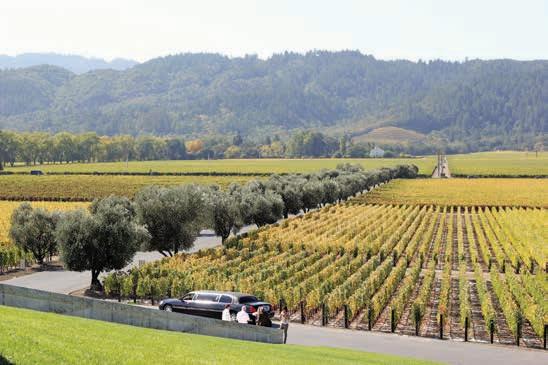
While you don’t need to be a connoisseur to enjoy winetourism, a little bit of research will go a long way. You don’t need to go into details of technical terminology such as “malolactic fermentation” or “ battonage ”, but a general understanding of the grapes grown in the region and the style of wines they produce will allow you to appreciate the experience so much more.
The beauty of wine is that each one so different. It’s hard to like them all, but being open minded about how they are produced really is fascinating. Take note of the differences in vine growing, the use of barrels, clay or concrete for fermentation or whether they opt for single variety grapes, traditional blends or choose to go against culture and tradition, Appreciate that variety is the spice of life and you could stumble on your new favourite grape, wine or style. n
The full range of FrezyDerm Oral Science is available from all leading Pharmacies.
Exclusively Distributed by Am Mangion Ltd • Tel: +356 23976000 W. www.ammangion.com.mt • frezydermalta • FrezyDermMalta
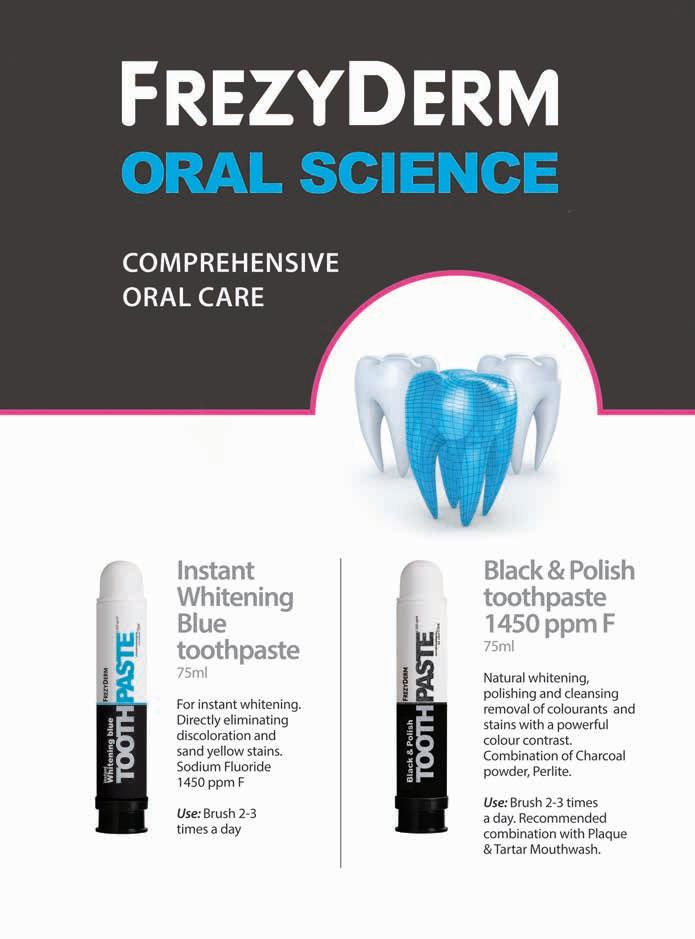
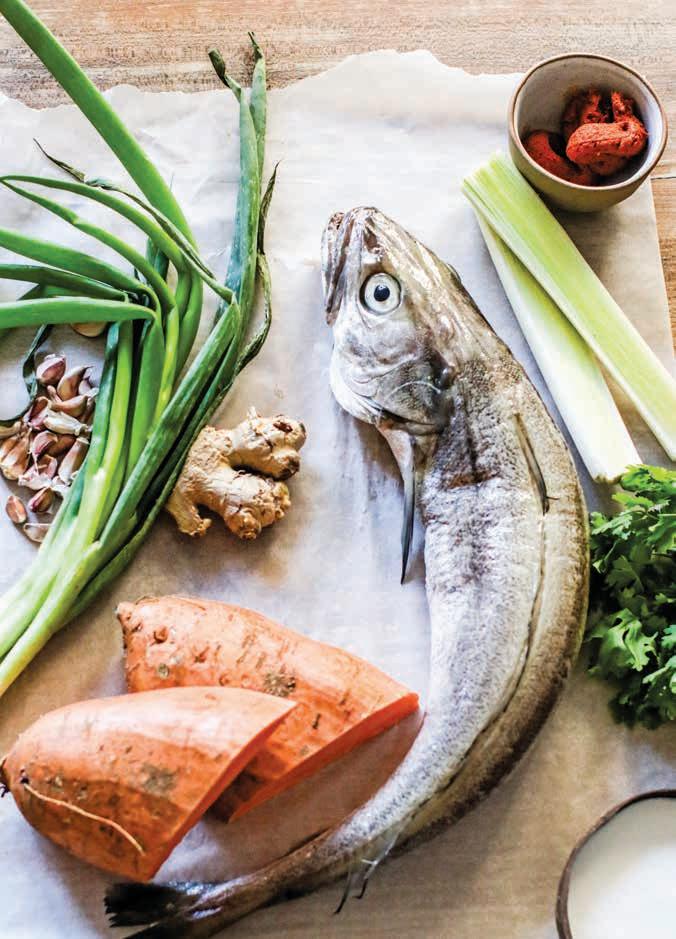
Carry summery flavours into late autumn with Claire Borg’s medley of fish and seafood. The pictures are hers too.

Who said barbecues are only for summer? Set yours alight, surround yourself with good company, and enjoy a relaxing lunch for as long as the weather holds.
Serves 4
YOU WILL NEED

8 to 12 red mullets, cleaned but not descaled 4 pieces of crusty bread, like sourdough or a local hobża 2 tablespoons vinegar • 6 tablespoons olive oil
3 tablespoons white wine • 10 cloves of garlic fresh parsley and mint • zest and juice of 1 lemon chilli (optional) • salt and pepper
1. Cut up the bread into small cubes and place them in a bowl. Grate the lemon zest over the bread and squeeze in the juice.
2. Add the finely chopped herbs, the grated garlic, white wine, vinegar and oil. Season to taste. Mix the ingredients well, crumbling everything together. Pack each fish with the stuffing and set them aside while you prepare the marinade.

3. Blend together 10 cloves of garlic, some white wine, olive oil, lemon juice and some fresh herbs. You will use this marinade to baste the fish with while cooking.
4. Heat up your barbecue and grill the fish for 4-5 minutes on each side, basting them with the marinade. Serve immediately.
Serve the perennially popular fish flavoured with lime juice, chilli, lemon grass, and ginger.

Serves 4
YOU WILL NEED
1 large lampuka, filleted and skin removed
2 avocadoes
1 small red onion
5 limes olive oil salt and pepper chilli flakes, to taste
1 small bunch parsley
1 small bunch coriander ginger (about 2 inches)
2 sticks lemon grass pomegranate arils (optional)
1. Thinly slice the lampuka and place it in a glass or ceramic bowl. Finely chop the herbs and add them to the bowl. Next, add the thinly sliced onion.
2. Trim the sticks of lemon grass, hammer them lightly, and add them to the bowl. Thinly slice the ginger and add that too. Cut the limes in half, squeeze the juice into the bowl and drop the squeezed-out rinds into the mix.
3. Season the mixture with salt and pepper and add chilli flakes if you want a spicy cevice. Mix everything together.
4. Peel and dice the avocadoes and put them into the bowl. Drizzle in some olive oil and stir the mixture gently.
5. Cover the bowl and let it rest in the fridge for an hour or longer. Serve the cevice on the same day, garnished with pomegranate arils.
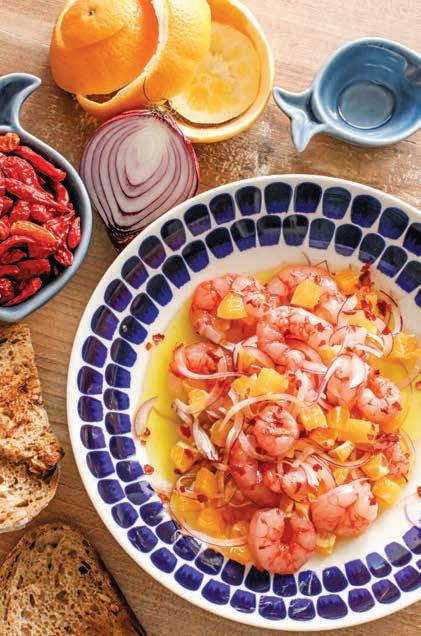
A light, refreshing starter, shot through with the sweet and sour flavour of citrus. Serves 4
YOU WILL NEED
400g fresh local prawns, peeled 1 large orange, peeled and diced
1 small red onion, thinly sliced olive oil chilli flakes salt
TO SERVE Toasted bread
1. Rinse the prawns well and pat dry. Use the tip of a sharp knife to remove the head and shell and remove the dark vein. Put the raw prawns into a ceramic or glass mixing bowl.
2. Peel the onion and thinly slice it up. Peel the orange and dice it, removing the seeds as you go. Add the onion and orange to the mixing bowl.
3. Add olive oil, salt, and chilli and mix all the ingredients together. Serve with toasted bread on the side.
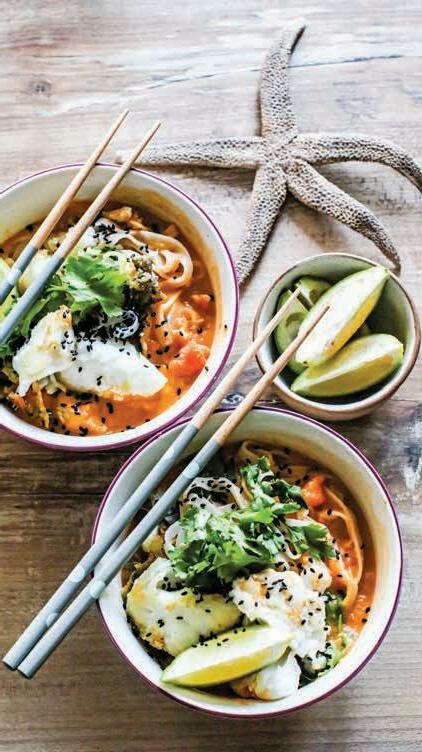
YOU WILL NEED
1 Hake of about 1.2/1.5 kg
1 small leek
2 inches fresh ginger
2 sticks of lemon grass (optional)
2 tablespoons red or yellow Thai curry paste some vegetable oil
1 stock cube (chicken, vegetable, or fish)
1 sweet potato
6 cloves of garlic some fresh coriander 200ml coconut milk
1.5l hot water
1 lime, quartered
1. First, prepare the ingredients. Fillet the hake and set the fillets aside. (Your fishmonger could do this for you, but ask for the trimmings which you will need for this recipe.) Trim and slice the leek, peel and slice the ginger, and trim and lightly crush the lemon grass sticks and cut them in half.
2. In a pot, drizzle some vegetable oil and quickly cook the leek, the coriander stems, the sliced ginger, the lemon grass, and the garlic. Add about 1.5 litres of boiling water, the curry paste and a stock cube. Add the head and bones of the fish, cover the pot, and let it simmer for 30 minutes.
3. Run the liquid through a sieve into a clean pot and discard the bones and vegetables. Pick any leftover meat from the fish head and set it aside.
4. Add the sliced sweet potato and coconut milk to the broth and cook them for 20 minutes. Add the finely chopped spring onion. Cut the fish fillets into 4 to 6 pieces and add those to the pot too. Cook for a further 5 to 8 minutes.
5. Meanwhile, cook the noodles on the side. When the noodles are done, drain them and divide them into serving bowls. Scoop the fish fillet pieces out of the broth and place them on the noodles.
6. Half blend the soup, add some coriander, and some more freshly cut spring onions. Adjust the seasoning to taste and spoon the liquid over the noodles. Serve topped with chopped coriander and a wedge of lime.
A satisfying and warming blend of spicy and sweet, this is perfect for a light lunch or supper.



Serves 2
YOU WILL NEED 1 fresh lobster,cut into pieces fresh ginger (about 2 inches) 6 spring onions 4 star anise
2 lemon grass sticks 4 whole chillies (optional) vegetable oil salt to taste
1. Peel the ginger and slice it thinly. Trim the spring onions and chop them up roughly. Trim the lemon grass and hammer it lightly to crush it.
2. Heat up a large wok or pan. Add some vegetable oil and tilt the wok gently in a circular movement till the oil coats the surface.
3. Add the ginger, spring onions, and star anise. Quickly cook them together for a few seconds. Add the lobster pieces and stir them together with the other ingredients. Add a ¼ of a cup of hot water and cover the wok so that the mixture will steam up.
4. Let the lobster steam for 4 minutes, then remove the cover and add seasoning. Serve the lobster with steamed rice.


This isn’t as fiddly as it looks. The broth/sauce can be made ahead, or even frozen for later use.
Serves 4
YOU WILL NEED
500g spaghetti
12 red mullet, cleaned, descaled, and filleted flour
salt and pepper vegetable oil
12 large local king prawns
1 onion
15 cloves of garlic fresh parsley
1 pinch of saffron
1 glass of white wine
2 tablespoons tomato paste
1 small carrot fresh mint, basil and marjoram lemon olive oil butter
chilli flakes (optional) 700ml boiling water
1. Peel and devein the prawns and set the heads and shells aside for the stock.
2. In a pot, heat together a knob of butter and some olive oil. Over a high flame, cook together the onion and carrot, then add 5 cloves of garlic and the shells and heads of the prawns. Add the tomato paste and the white wine. Cook for a couple of minutes
3. Add the boiling water, the saffron, a few basil leaves, some mint and a little fresh marjoram. Cover the pot and let it simmer for 30 minutes.
4. Blend the mixture together until it is fine, then run it through a fine sieve. Discard the pulp and keep the broth/sauce.
5. In a large frying pan, heat up some vegetable oil. Season some flour with salt and pepper. Toss the fillets in the flour and shallow fry them in the oil until golden. Set them aside.
6. Bring a large pot of water to the boil and cook the pasta up to 4 minutes under the suggested cooking time.
7. Meanwhile, grate the remaining garlic into a large pan, add some grated lemon zest and drizzle in some olive oil. Cook the garlic very gently over a low heat, taking care to not let the garlic burn.
8. Drain the pasta and add it to the pan with the garlic and oil. Add the broth from the prawns and cook the pasta in the broth for 4 minutes. Crumble in 4 of the fish fillets, add the raw prawns and a handful of very finely chopped parsley. Toss everything together and turn off the heat. The prawns will finish cooking with the heat from the pasta.
9. Season and drizzle with olive oil. Serve the pasta topped with the remaining fillets of fish, more chopped parsley and more olive oil.

When evenings turn darker and cooler, there’s something particularly comforting about an old-fashioned cup of cocoa that warms you from the inside out. If plain hot chocolate sounds too dull, try one of these.

This has a softer and milder flavour. If the taste is too sweet, reduce the amount of honey and sugar, and add a squirt of lemon juice.
TO GARNISH dried rose buds
1. Blend the pistachios until very fine. Add a tablespoon of honey, then blend again until you have a smooth paste. Set this aside.
2. Break up the white chocolate into very small pieces and place them in a pan with the milk. Gentle warm the mixture, while stirring, until the chocolate melts completely.
3. Now, add the pistachio paste and stir the mixture over a low heat until the paste blends in. Add the honey and sugar and keep stirring until they dissolve, then stir in 3 tablespoons rose water.
4. Whip the cream with a tablespoon of rose water until it is light and fluffy.
5. Pour the hot chocolate into serving mugs, top with the rosewater cream and garnish with dried rose buds. Serve immediately.

YOU WILL NEED
1l full fat milk
400g dark chocolate 4 cinnamon sticks
4 tablespoons dark honey 2 tablespoons soft brown sugar
1 tablespoon chocolate hazelnut paste juice of half an orange 4 tablespoons dark rum
1. Break the chocolate into small pieces and place them in a pan over a low flame with the milk and cinnamon sticks. Heat gently while stirring, until the chocolate melts. Let the pan simmer gently for three minutes.
2. Add the honey, sugar, and chocolate hazelnut paste and stir until they dissolve completely. Add the orange juice and stir again.
3. Add the rum a little at a time, tasting the mixture occasionally. You may need to add a bit more brown sugar if the taste is too bitter.
4. Remove the cinnamon sticks and pour the chocolate into mugs. Serve sprinkled with dark chocolate shavings and with a fresh cinnamon stick to use as a stirrer.



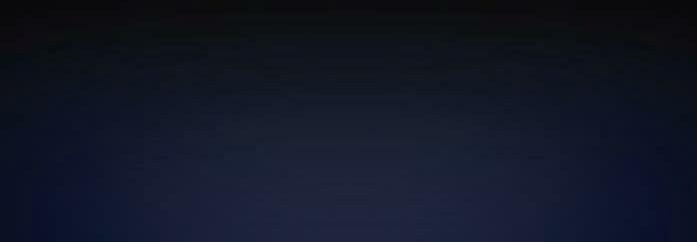







When pomegranates are falling off the trees, oranges are starting to come into season, and bags of nuts are on display at every food store, warm up a weekend by baking with fruit and nuts.

This is an easy make-ahead dessert. Prepare the cake the day before you need it, let it infuse overnight, and assemble it just before serving.
Serves 4
YOU WILL NEED
3 free range eggs, lightly beaten unsalted butter (same weight as the eggs) sugar (same weight as the eggs) self-raising flour, sifted (same weight as the eggs) pomegranate molasses pomegranate arils
2 punnets raspberries 1 tablespoon chopped pistachio nuts
1. Line a cake tin with non-stick paper and preheat the oven to 170°C.
2. Beat the butter and sugar until light and fluffy. Beat in the eggs and fold in the flour. Transfer the batter to the lined tin and smooth the top. Bake in the preheated oven for around 20 minutes. The surface should be turning golden and the cake should spring back when lightly pressed.
3. Remove the cake tin from the oven and let it stand for a few minutes. Then, remove the cake from the tin and transfer it to a wire rack to cool down completely.
4. Mix 3 tablespoons of pomegranate molasses with a little warm water to loosen it. Prick the cake surface all over with a toothpick, then pour the molasses evenly over the top and let it sink in. Wrap the cake in baking paper and foil and let it stand overnight.

5. Just before serving, spread a thin layer of molasses over the top of the cake. Cover the surface with raspberries. Scatter with a loose handful of pomegranate arils and then a spoonful of chopped pistachio nuts.

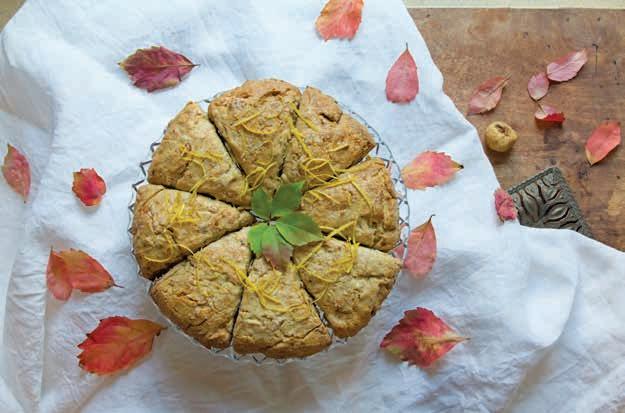
“Lumi-larinġ” are in season at the moment, but only for a short time. If you are unable to find any, use sweet oranges instead.
Serves 8
YOU WILL NEED 220g dried figs, roughly chopped juice of two “lumi-larinġ” 320g plain flour 1 tablespoon baking powder 3 tablespoons golden caster sugar 1 pinch sea salt 110g unsalted butter, cold 50g chopped walnuts 2 free range eggs, beaten 120ml thick cream
TO GARNISH lemon zest
1. Put the chopped figs in a warm bowl and pour over the citrus juice. Let it stand while you prepare the dough.
2. Put the flour, baking powder, sugar, and salt into a mixing bowl. Cut up the butter into small pieces and use a knife to cut it into the dry ingredients.
3. Use the tips of your fingers to rub the ingredients together until the mixture looks like fine breadcrumbs. Stir in the walnuts. Lightly drain the figs and mix them in.
4. Make a well in the flour mixture, beat the cream and eggs together in a separate bowl and pour them into the flour well. Stir the mixture until a dough forms. You might need to add a bit more flour if it is too sticky.
5. Knead the dough on a floured surface for a minute or two, then shape it into a large, flat disk. Place this on a lined baking tray and cut it into 8 wedges. Use a knife to separate them slightly.
6. Brush the top of the dough with milk or cream and sprinkle with coarse sugar. Bake at 200°C until cooked through and starting to turn golden brown (15-18 minutes).
7. Remove from the oven and serve warm, sprinkled with lemon zest.

Choux pastry buns are best when freshly baked. At a push, make them a few hours ahead. Any leftover filled buns can be frozen and served as a cold dessert.
Serves 6
YOU WILL NEED 200ml water
80g unsalted butter
100g plain flour, sifted 2 eggs, beaten
FOR THE FILLING
250ml double cream 1 tablespoon lemon juice
TO SERVE pomegranate arils crushed caramel, made from 30g sugar dark chocolate shavings
1. Prepare the caramel by heating the sugar over a low flame until it melts and starts to caramelise. Shake the pan gently from time to time to ensure the sugar doesn’t burn. Pour the liquid caramel onto a heatproof dish or tray lined with baking paper and let it spread. Let it set, then crush it into shards.
2. To make the choux pastry, put the butter in a pan with the water and set it on a low heat. Once the butter melts and the mixture is at a rolling boil, remove the pan from the heat and beat in the flour. Set it aside. Once the mixture has cooled down completely, stir in the beaten eggs a little at a time until the mixture turns smooth and shiny.
3. Preheat the oven to 200°C. Use a piping bag with a wide nozzle to pipe mounds of dough on a lined baking tray and bake for 30 minutes. Use a sharp knife to make a small hole in the side of each bun and return the tray to the oven for another 5 minutes. Transfer the cooked buns to a rack to cool down.
4. Whip the cream till it thickens then whip in the lemon juice. Leave the bowl in the fridge to chill for 30 minutes.
5. Just before serving, slice open each bun and scoop in a spoonful of lemon cream. Repeat with the other buns and pile them up on a serving plate. Scatter with pomegranate arils, shards of caramel, and dark chocolate flakes.

Cooked quince will store easily in its own syrup if kept refridgerated in a closed container. The fruit’s tarty taste is offset by the sugar and honey. Serves 2

WILL NEED
quince
water
sugar1 cup (200g) sugar
clear honey
lemon
individual portions of sponge cake
TO SERVE crushed caramel lime zest
1. Mix the honey, sugar, lemon and water in a metal pan and set it a medium heat.

2. Peel and core the quince and slice it thinly, dropping the slices into the warming liquid as you go.
3. Cut a round of baking paper the diameter of the pot and cut a 2cm hole in the centre. Place this over the simmering liquid.
4. Let the pot simmer for an hour, then check whether the quince is cooked through. It should be soft but not mushy. The fruit will change colour as it cooks and the liquid will reduce to a syrup.
5. Once the quince is cooked, remove the pan from the heat and set it aside to cool down. Store the quince in its own syrup in the fridge until needed.
6. Just before serving, place a slice of sponge on a serving plate, spoon some syrup over it, and top with slices of quince. Repeat the process for the next two layers, then top with crushed caramel and lime zest. Spoon some more syrup around the cake, and serve immediately.


Most of us have experienced a sleepless night before. A restless night here and there is not something to be worried about, you might just feel irritable and under the weather the next day. Chronic lack of sleep, however, can have detrimental effects on your physical and mental wellbeing. Increasing the risk of coronary heart disease, stroke, diabetes, obesity and Alzheimer’s disease are among the risks related to a lack of sleep.
Humans are creatures of habit and our bodies have the potential to be finely tuned machines. A lack of routine, alongside other variables, can influence our biological clock which is crucial for our general wellbeing and sleep. We actually have multiple little cycles going on in our body like our circadian rhythm, which is particularly important in balancing wakefulness and sleep. Often enough, this can be thrown off by variables like:
• jet lag;
• shift work;
• advanced or delayed sleep timing;
• artificial light exposure;
• fluctuating sleep hours;
• behaviour choices;
• caffeine and energy drinks;
• stress and emotional difficulties.
Set a hard and fast rule to keep screens out of the bedroom. The TV, mobile phones, and all our screenful and blue light-emitting technology have no place in the bedroom. While checking what your friend’s dog did today on Instagram stories and catching up with the latest Netflix series is fun before sleep, it might not be worth the consequence – compromised sleep.

Make sure you create a soothing space that oozes relaxation and rest. Start by making sure you have a supportive bed and mattress to ensure proper posture and comfort during the night. Think about the little details like the temperature and scent of the room. 16°C -18°C is considered optimal, while scents of lavender and geranium can help to create a soothing atmosphere
This is similar to being anxious about anxiety. Worrying about a lack of sleep and constantly checking the clock to measure the exact minutes you are going to sleep can be counterproductive. Such thoughts can hinder your ability to sleep by causing you to over think and making the problem even worse.
It’s not the first time you’ve heard it, but it applies to sleep. Quantity is important but sleep quality is just as, if not more significant. A high-quality mattress set on the right bed can greatly impact your sleep. For this reason, we recommend shopping for mattresses at professional stores where you will be allowed to try out various mattress collections and find the right support for your body.

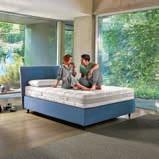
Sleep well, live better! When investing in Dorelan, the only sleep problem you may encounter is oversleeping.

Dorelan, founded in the late 1960s, is now the Italian bedding market leader renowned for guaranteed sleep quality and tradition, producing exclusive collections of mattresses, beds, sommier beds, pillows and a myriad of bedroom accessories, designed to guarantee maximum comfort and sleep quality for the entire family. Moreover, Dorelan has an extensive collection of bed-related products dedicated for the hospitality and elderly care sector.
Visit one of our Dorelan showrooms in: Triq L-Imdina, Zone 2, Central Business District, Birkirkara - 2546 4171/2 Triq L-Imġarr, Għajnsielem - 2546 4152
Alternatively, contact us on malta@dorelan.it
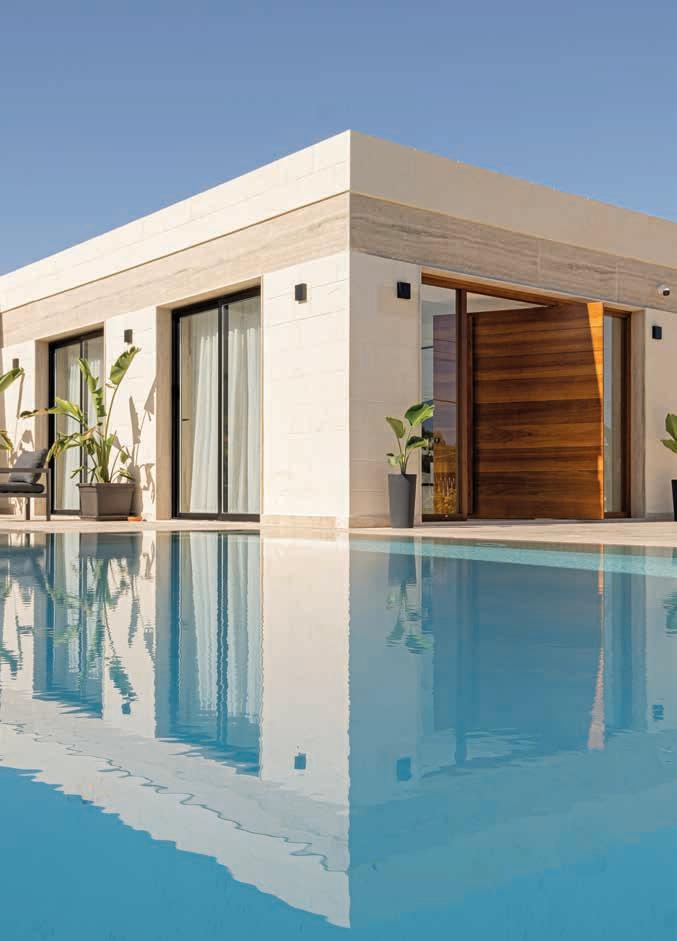
Above: The dramatic oversized wooden front door, one of the key design features for the house, was crafted by Futura Woodworks. Their woodworking flows throughout the property, from the sleek customised wooden kitchen to the wooden wall paneling and bespoke furniture.
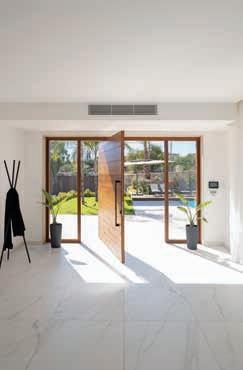

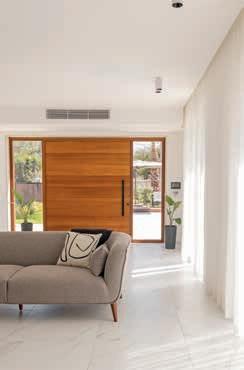
Left: A marble-framed fireplace anchors the formal sitting area.
The seed of any project is the design concept, the central idea that shepherds and shapes its evolution through the design process all the way through to its final realisation. In planning the design and fit out of Villa Ortigia, the core concept was to design a U-shaped contemporary home, for a family with children, around a pool and three distinct garden areas
The Lounge Chair was designed with the aim of combining an elegant appearance with ultimate comfort. It has been produced by Vitra using virtually the same methods ever since, and is now recognised as a great classic of twentieth-century furniture design; to be cherished over a lifetime and even passed on from one generation to the next.
Available at your local Vitra partner: Vivendo, Mdina Road, Qormi, QRM 9011 · 2277 3000 · info@vivendo.mt · vivendo.mt
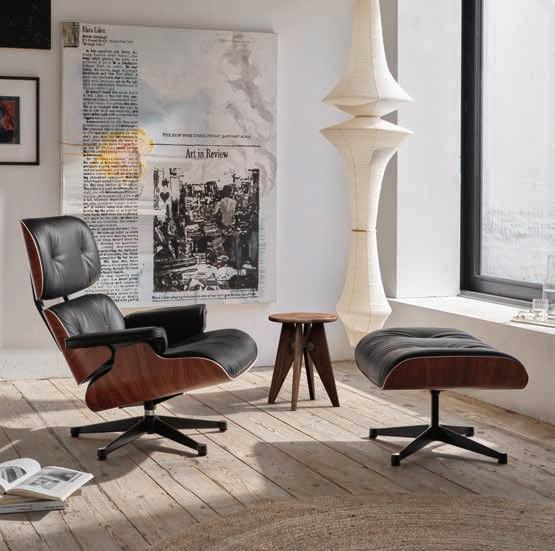 Eames Lounge Chair & Ottoman, Charles & Ray Eames, 1956
Eames Lounge Chair & Ottoman, Charles & Ray Eames, 1956
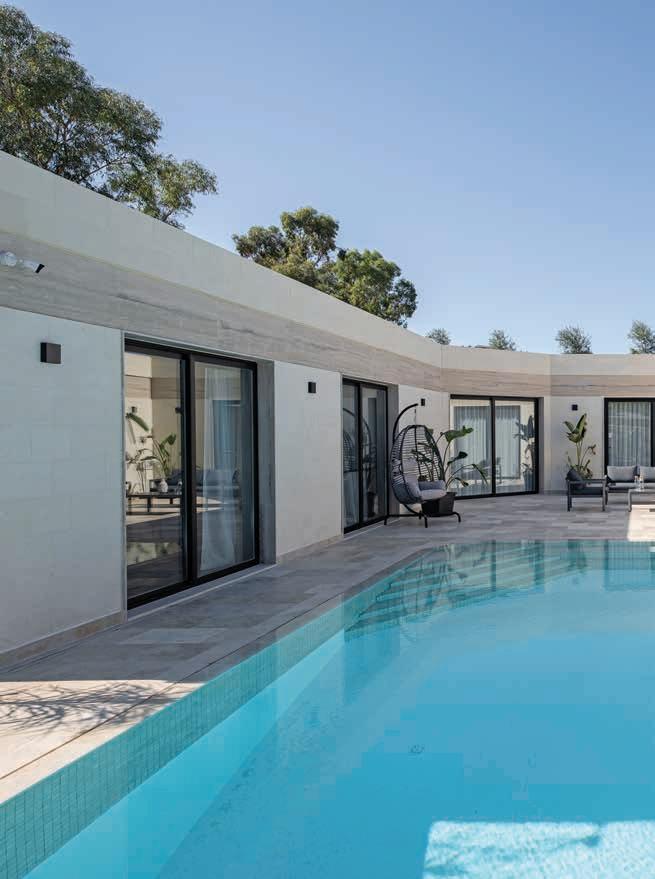
arms of the apparently onestorey building embrace the comfortably large swimming pool. The interior of the pool is white, lending the aquamarine water an ethereal quality as it shimmers in the sunshine. At the end of the pool, a floating sundeck provides a viewing point that frames the house elevation yet also captures a segment of the landscape scenery. When the exterior elevations of the house were being designed, it was the viewpoint from the sundeck that was key
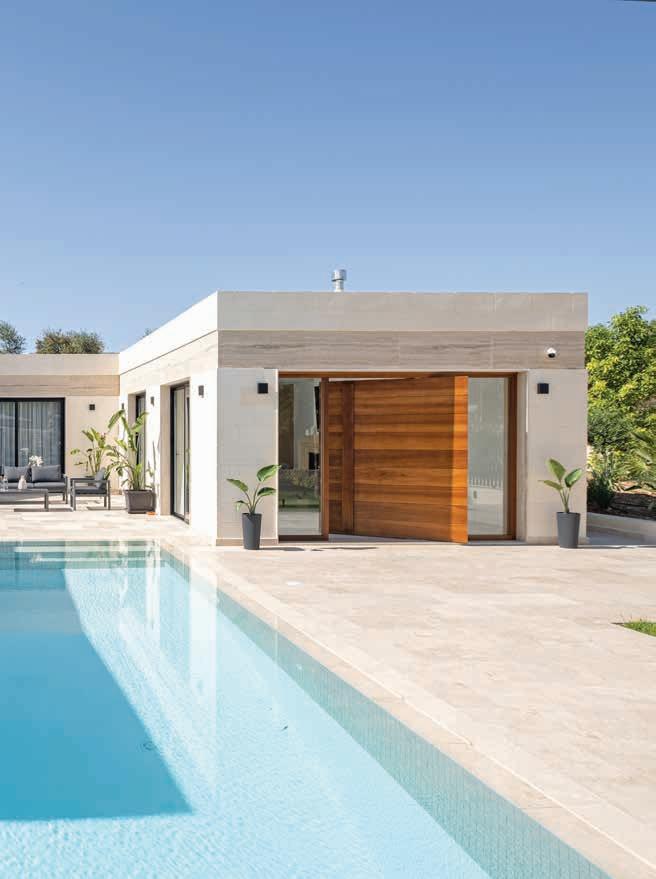
The
The façade elevation evolved through an analysis of precise proportions inspired by the iconic Mies Van der Rohe’s Barcelona Pavilion.
Soft, natural light, smooth surfaces, and neutral tones create a zen-like atmosphere.
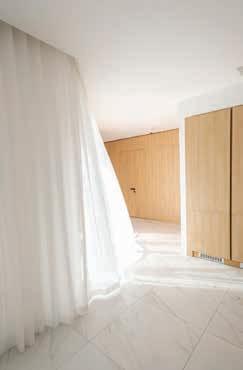
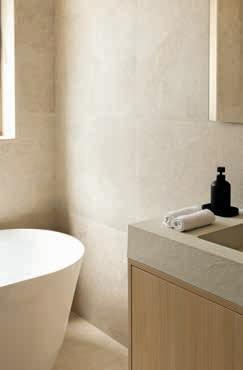
Two of the bedrooms are tucked away at the back of the building and, further inwards, the large master suite enjoys the luxury of space and has its own private bathroom. For the more active members of the household, the basement garage hosts a large high-tech gym and there’s also office space connected directly to the villa through a central lift.


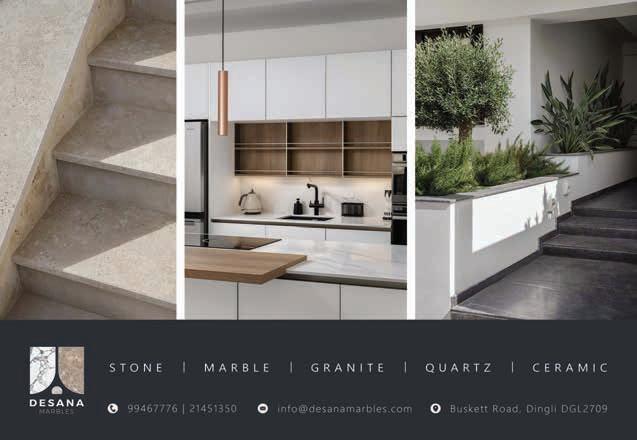
A floating sun deck hovers over the end of the pool, providing a viewing point that frames the house elevation.
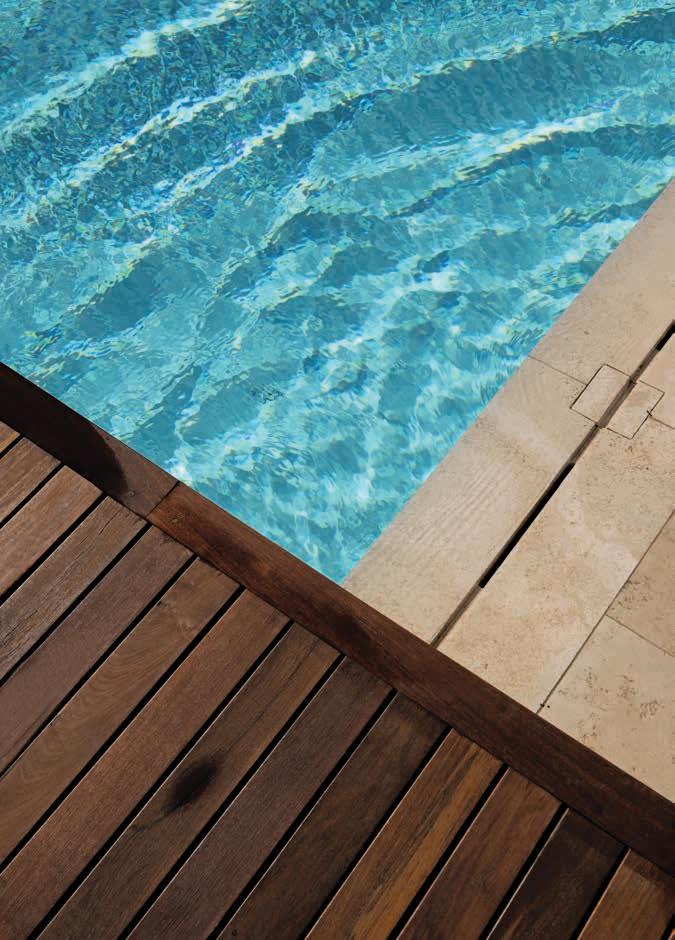
The three Mediterranean garden areas vary in type and precise location around the house itself. One of its more attractive features is the large floating sun deck that sits in the centre of the outdoor area opposite the pool, backed by palm trees and a low-rise rubble wall.


Above left & below: The contrast of cool smooth marble and warm wood provides visual and tactile texture. Marble works were supplied and installed by Desana Marbles
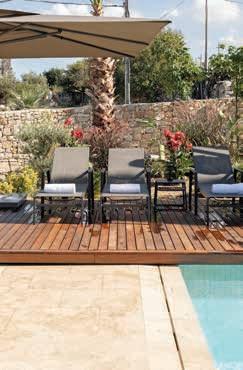
Above & left: Throughout the interior, a soft neutral colour palette creates a sense of calm. Light, translucent curtains shield the interior from harsh sunlight and soften the overall look.

The oversized front door is fashioned out of smooth wood, providing a warm contrast to the large expanses of cool neutrals. From there inwards, the open-plan space flows from the formal living area through a dining area that seats eight, onto an informal living area and then an open-plan kitchen. From here on, the interior spaces are private.

The villa’s design re-examines the boundaries of interior-outdoor spaces.
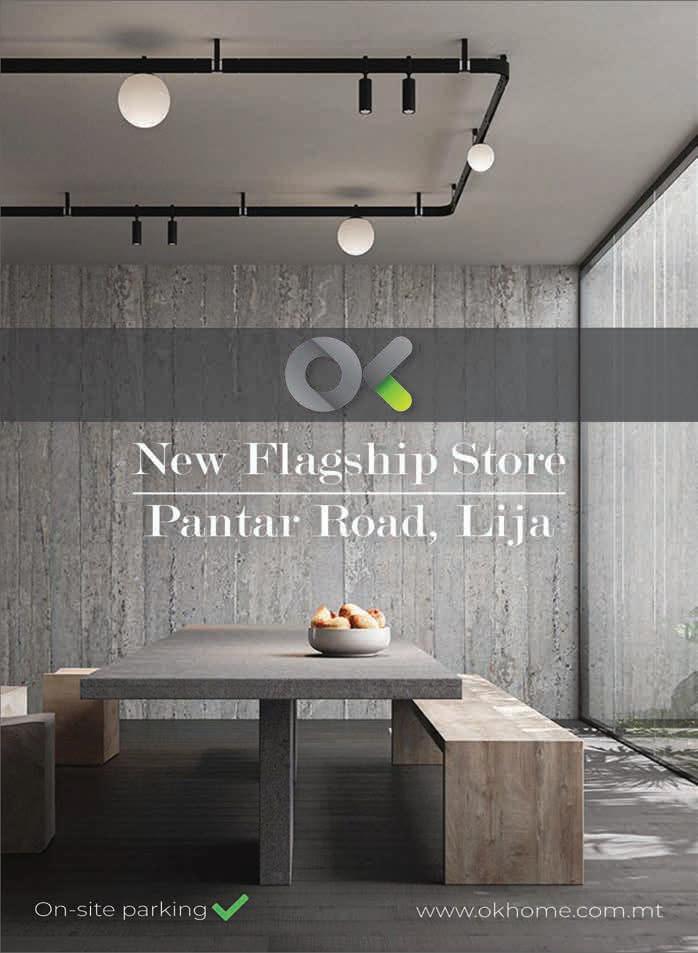
The sculptural pendant lamp is a focal point in the dining area. Lighting throughout the villa is from OK Home.

The villa’s design re-examines the boundaries of interior-outdoor spaces, such as by the use of natural light and transparent glass elevations toward the south and west directions. These glass elevations are used as dynamic partitions between the night and day areas of the building.
The façade elevation evolved through an analysis of precise proportions inspired by the iconic Mies Van der Rohe’s Barcelona Pavilion, which can be seen throughout the entire property.
The inviting curves of a vintage Eames chair offset the straight lines of customised fitted furniture in the living area. The bespoke furniture was supplied and installed by Futura Woodworks. The classic Eames chair is available from Vivendo.
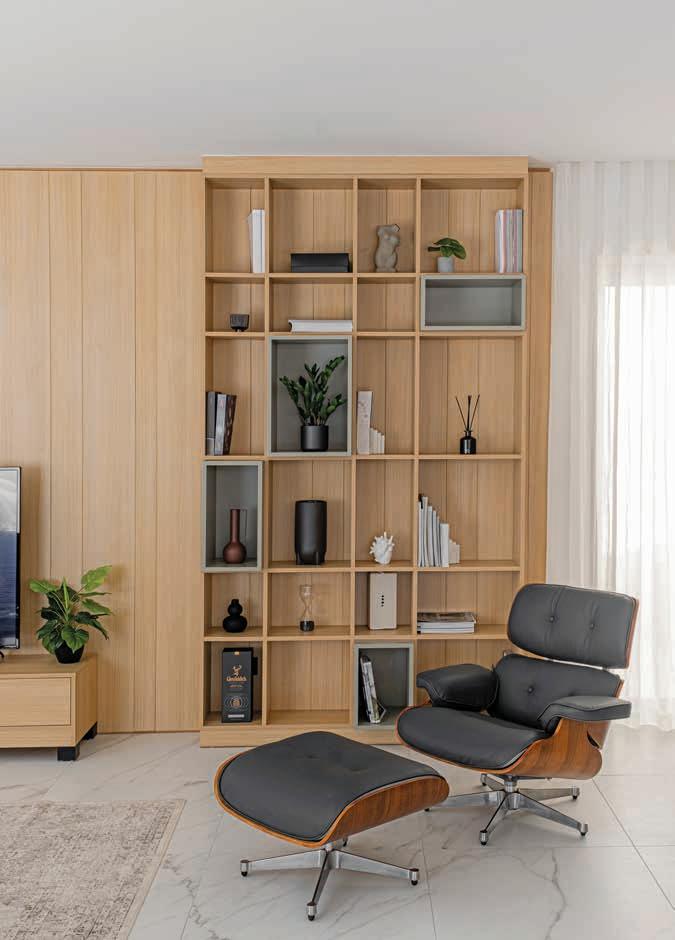
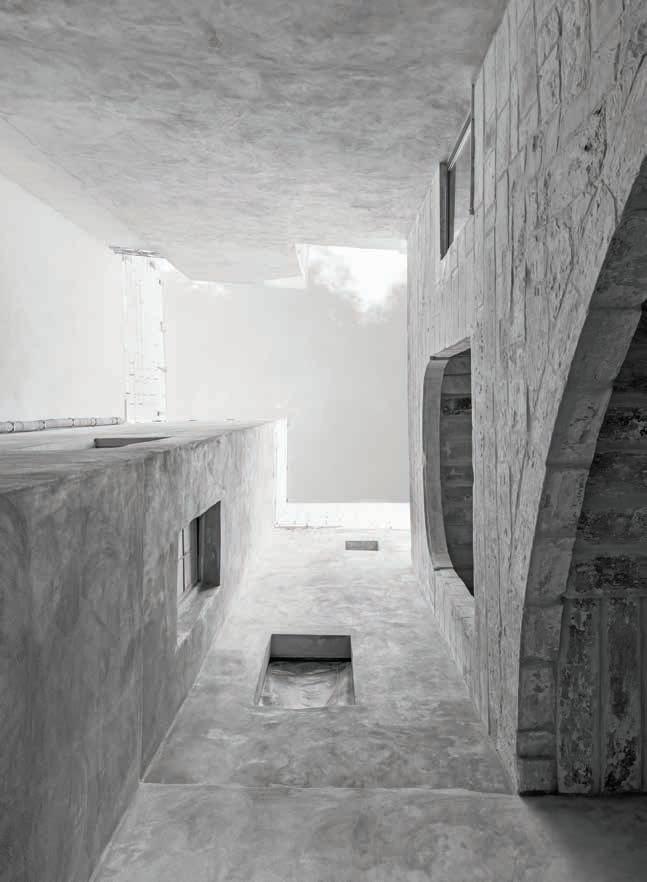
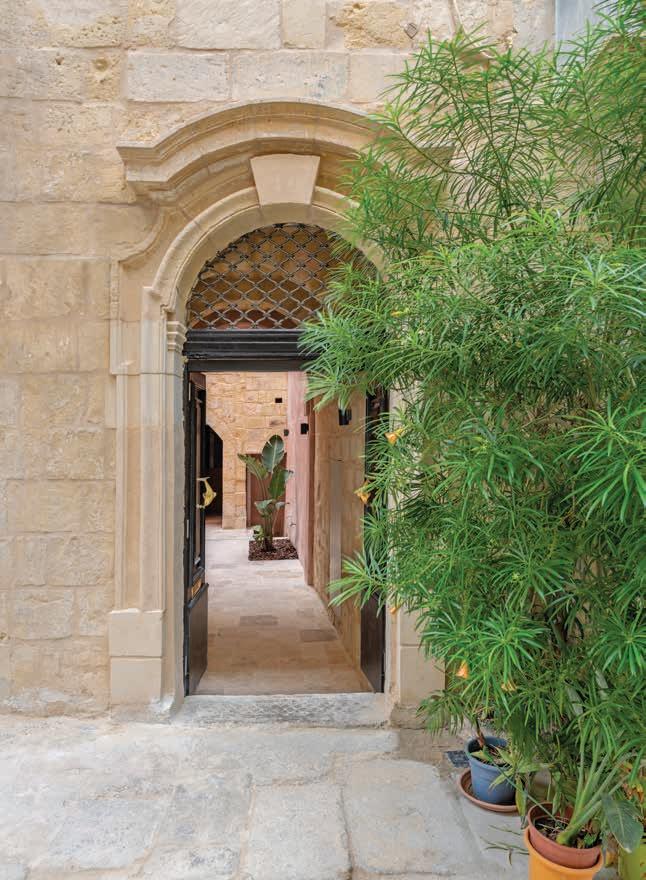
It all began modestly, with a compact Sliema maisonette called Lorry, one of a row of anthropomorphised homes with endearing personal names. Valentino Architects redesigned Lorry’s layout, blending a contemporary aesthetic with existing traditional elements. The process was exhausting but inspirational for Lorry’s owner, triggering the search for another rundown building crying out for transformation.
“I have a passion for old buildings,” Jeffrey Farrugia says, adding that he “hates seeing them falling to bits.” He’s talking about his recent project, Dar Pietru w Pawl, also designed by Valentino Architects. When he discovered the old house in Senglea, it had been unlived in for decades and was badly run down. He later found out from the neighbours that, at one point, the ceiling had caved in and the problem was dealt with by sweeping it into the cellar and then sealing it off.
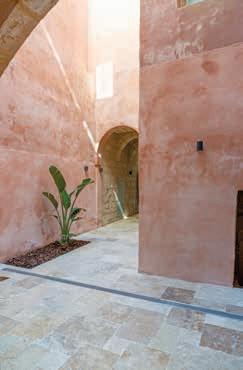



Unusually, the bedrooms in Dar Pietru w Pawl are on the ground floor and have direct access to the central courtyard, a pleasant place to sit for a quiet moment. Large glazed apertures by Carmelo Delia maximise the amount of natural light that reaches the interior.
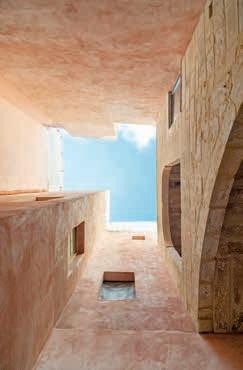

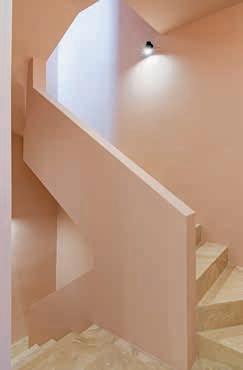
The discovery of the cellar was serendipitous. When works on the house were under way and the ground floor tiles were being removed, an opening to the cellar emerged, adding a new dimension to the project in more ways than one – removing the copious amounts of backfill increased the workload but expanded the available volume of liveable space.
The house was originally organised on two levels and set around a courtyard accessed from the street front door through a narrow passageway overhung by the neighbouring house. The vertical space has been increased from two levels to four: the original cellar and ground floor, a new floor above that, and a roof terrace with expansive views over the Grand Harbour.


The 4-storey Dar Pietru w Pawl is organised vertically, inverting the usual layout where public areas are nearest the front door and private spaces the furthest away. The bedrooms have been installed on the ground level, the first floor is now the living area, what was the roof of the second floor is now closed off as the kitchen and dining space, and the roof above that is now a terrace with views of Marsa, Floriana, and Birgu seafront all the way up to harbour breakwater.

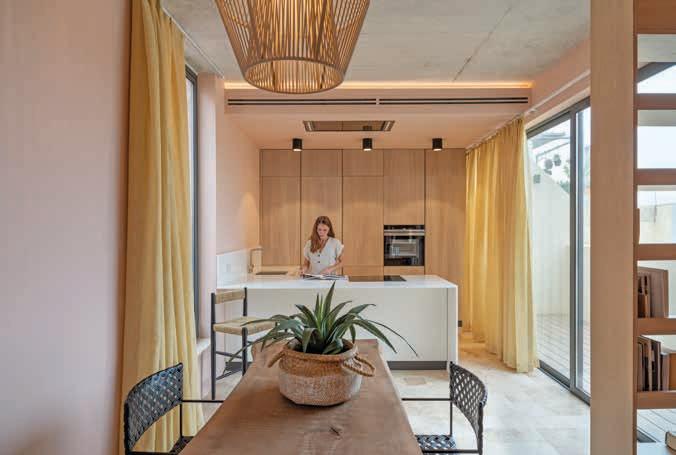
The project brief was simple. Jeffrey Farrugia knew he wanted the house to have a Moroccan vibe “and Valentino Architects came up with a mood board capturing the vision I wanted.” The walls surrounding the internal courtyard needed treatment with macro-plaster, a thick porous layer which allows walls to breathe and which absorbs any latent salt deposits that emerge from the underlying stone. The looming question was what colour it should be. They settled on a peachy pink, reminiscent of the Khazneh in Jordan’s Petra and the neighbouring Wadi Rum desert, which captures the tone of the stone walls that have been left exposed.


Some choices were dictated by circumstance. Solar panels were not installed because the bracket would have had a negative aesthetic impact and the building’s limited footprint precluded a viable and sufficient system anyway. However, there are compensations: underfloor heating in the bathrooms is a luxurious touch, insulation has been installed to prevent arbitrary heat loss and gain, and the 100-year old well is being used to store rainwater.
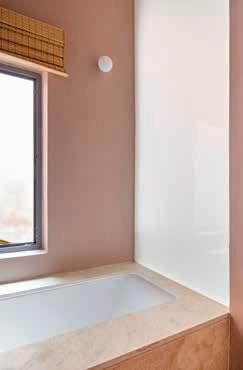
3 years and one pandemic later, the house is ready and waiting for new owners to move in, and Jeffrey Farrugia is pleased with the result: “Building blocks of flats is not what I want to do. My heart just isn’t in it. I like to think I am part of the prettification, not the uglification, of the country.” n

Visual texture and warmth define the look of the interior. The smoothness of the wooden furniture and stone floors contrasts with the rough texture of the original ceiling. A round mirror and curved sanitary ware from Satariano soften the angularity of the bathroom and shower.
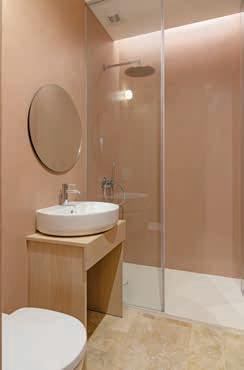
Address: St Mark Street, Valletta, Malta. Telephone: 2122 0949 Mobile: 9985 7016
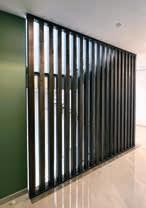


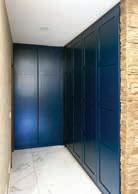

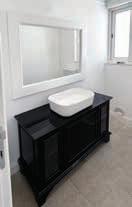
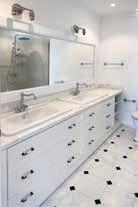


Email: carmelodelia.joinery@gmail.com
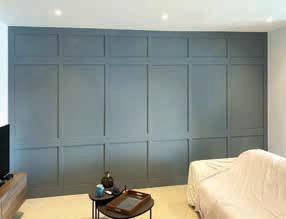
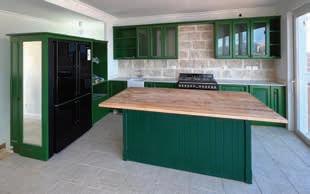
halepensis and its common name in several languages – Pin d’Alep in French, Pino d’Aleppo in Italian, Alepski bor in Croatian, Halep çamı in Turkish – are a nod to the Syrian city of Aleppo and its surrounding province of Haleb. The species was first described in 1768 by Philip Miller, an English botanist of Scottish descent who was the chief gardener at London’s Chelsea Physic Garden for several decades until shortly before he died.

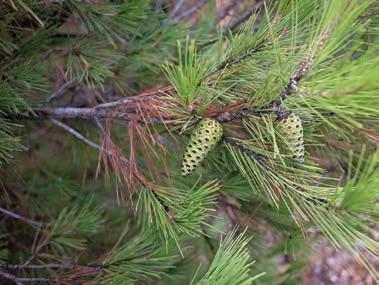
The tree’s native range extends all around the Mediterranean coastal region, from Morocco and Spain to Greece, Syria and Lebanon and further inland to Jordan, and has been introduced into other parts of the world. It tolerates drought and heat but cannot survive in the shade. It needs
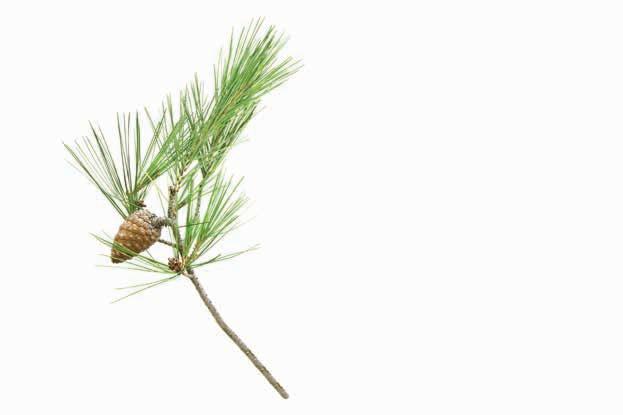
exposure to direct sunlight, which is why it is found growing naturally in the hotter and drier parts of the Mediterranean, usually on the sunny side of hills or slopes leading down to the sea. It is able to grow high up in the mountainous regions of southern and eastern Spain, Crete, Morocco, Algeria, and Tunisia, but is mostly found at low altitudes from sea level to around 200m.
Available charcoal data indicate the early spread of Pinus halepnsis, along with other Mediterranean trees and shrubs including Arbutus unedo (strawberry tree) and Rosmarinus officianlis (rosemary), during the Mesolithic period (Middle Stone Age), giving it plenty of time to adapt. It is able to grow in areas where there is low precipitation and the soil is nutritionally poor and often dry, making it a perfect fit for Malta’s arid natural environment.
In the eastern Mediterranean, forests of Pinus halepensis sustain their communities as sources of livestock grazing and wild honey production. Here in Malta, the Aleppo Pine (Żnuber, Siġra tal-Arżnu, or Siġra tal-Prinjol) is popular as an ornamental tree. Established trees that have stood for a century or so in some areas are protected by law, if not always effectively in practice, adding grace and charm to otherwise soulless commutes and bleak open spaces.

Though not native to the Maltese islands, the Aleppo Pine is now classified here as a “naturalised alien” and its planting is encouraged. It can grow up to 20m tall and is evergreen, producing seeds all year round. Its flowers are largely inconspicuous, but develop into elongated narrow cones that


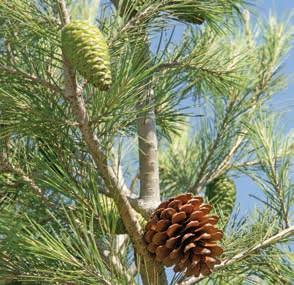
start out greenish in colour, turning red-brown as they ripen. Its seeds are wind-dispersed, catching the breeze with their translucent “wings” and scattering as the pine cones ripen and open in the heat.
Seeds can be harvested from unopened pine cones any time of year. Place unopened cones for a few minutes in a warm place, such as behind a sunny window or in an oven that is still warm but turned off. Once the cones open, shake them to release the seeds. Discard the “wings” and sow the seeds in deep pots just below the soil surface, any time from November to March. Pine seedlings grow best in soil that is almost dry and won’t survive heavy watering. Keep the soil slightly damp until the seeds sprout, then water only sparingly. n
Potter: Drawn to Nature exhibition to tell the complete life story of one of the 20th century’s best loved authors of children’s fiction, from storyteller to natural scientist and conservationist. It celebrates Potter’s early talent for storytelling, her fascination with the scientific study of the natural world, as well as her passion for sheep farming and conservation – a legacy still felt today.
The exhibition showcases over 200 personal objects including artworks, rarely seen letters, manuscripts, sketches, coded diaries, family photographs, commercial merchandise and personal artefacts. Also on display is an intricately embroidered waistcoat and blue dress coat, the author sketched on one of her many visits to the South Kensington Museum (now the V&A), which would later feature in her story The Tailor of Gloucester costumes are displayed alongside a sketch of the waistcoat and finished artwork from Potter’s book.
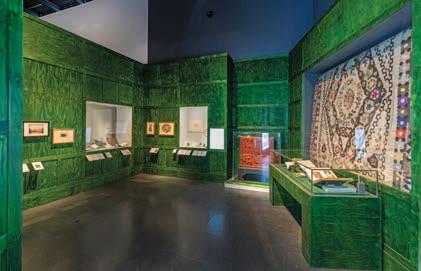
Across four sections, the family-friendly and interactive exhibition follows Potter’s from Victorian London to the Lake District fells, where she
The next issue will be out in December with The Malta Independent on Sunday.
For advertising, contact Sean Ellul on +356 7921 0705 sellul@independent.com.mt
eventually settled in a farmhouse now curated by the National Trust. The first section of the exhibition, Town and Country, provides a backdrop to her childhood in South Kensington in London; Under the Microscope highlights Potter’s interest in natural science; A Natural Storyteller reveals her almost accidental journey to becoming a best-selling author; finally, Living Nature follows Potter to the Lake District and celebrates her profound impact on the natural landscape.
Visitors leave the exhibition feeling they have come to know the real Beatrix Potter as an exceptional woman, determined to gain success and respect in notoriously closed-off male dominated fields, from the field of science and mycology to the fells of Cumbria, close to the Scottish border.
Beatrix Potter: Drawn to Nature is on at the Victoria & Albert Museum in London until 8 January 2023.

Above: The Tale of Benjamin Bunny, Peter with handkerchief by Beatrix Potter, 1904. Watercolour and pencil on paper.
© National Trust images.


Middle: Man's court waistcoat, 1780s, English or French; white silk, embroidered, in Beatrix Potter, Tailor of Gloucester © Victoria and Albert Museum, London.
Below: View across Esthwaite Water, by Beatrix Potter, 21 November 1909. Linder Bequest. © Victoria and Albert Museum, London, courtesy Frederick Warne & Co Ltd.

